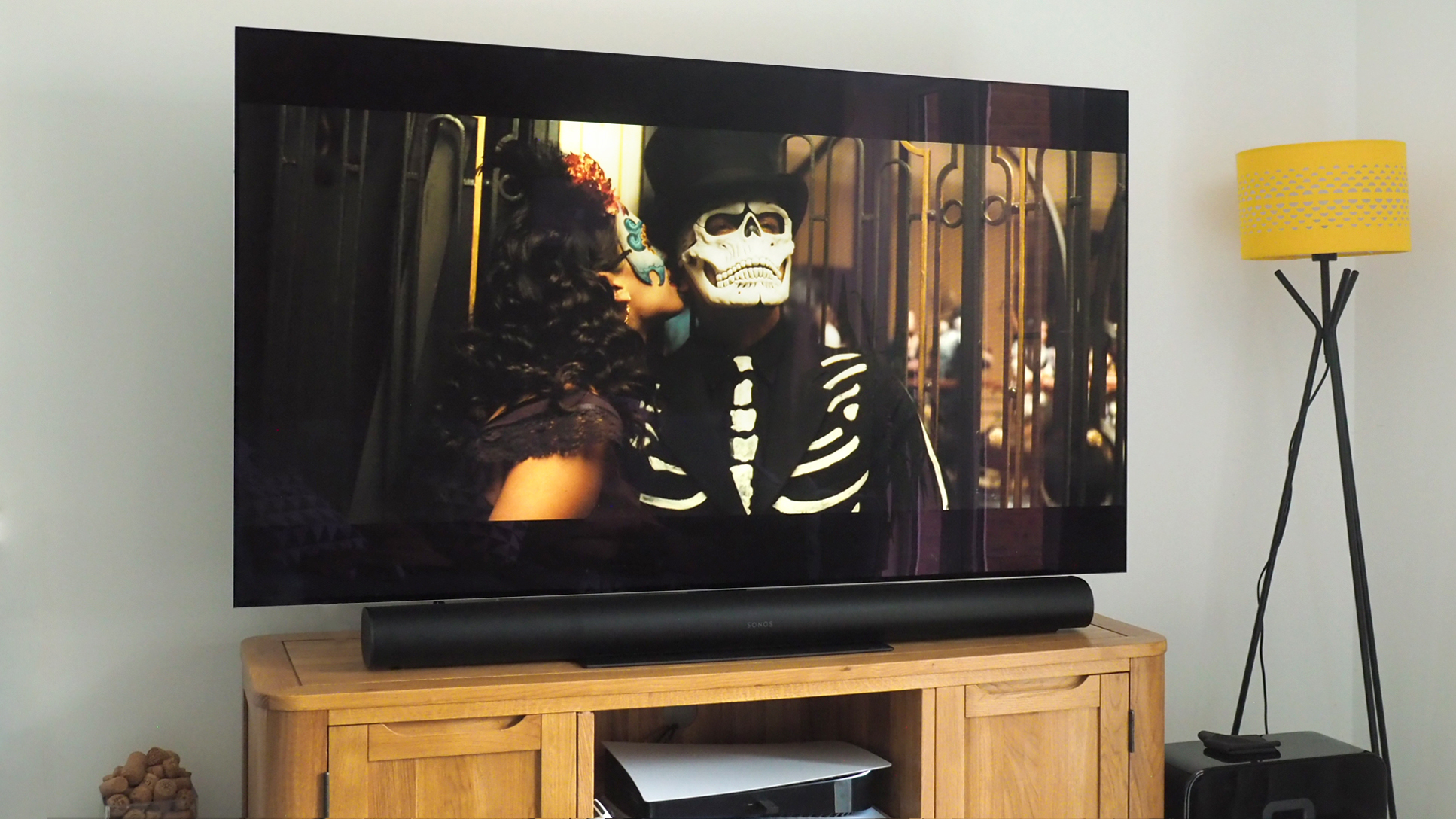
LG doesn't make things easy on itself. Just last year, when I reviewed the LG OLED G3, it was easy to declare that "TV doesn't get better than this". Except here we are, 13-and-a-bit months later, with the LG OLED G4 on review and, you guessed it – it's somehow even better. Easily one of the best TVs of 2024 – and I reckon the de facto best TV for gamers.
That's no small feat by any measure, as the G4's predecessor seemed to have almost every little detail present and correct, making it the best pure OLED TV money could buy. Yet somehow the engineers at the Korean giant's HQ have squeezed in yet more brainpower – in the form of a new AI chip – to deliver even more considered brightness (I'll get to the specifics of that later) and upgraded picture quality.
This is also the first time LG's G series has dropped its wall-mount-only option – the 55- and 65-inch models offer stand-mount or wall-mount options, you choose! – which I think will make it hugely more appealing for many prospective buyers who don't default to going hardcore DIY and getting the telly up on the wall.
All that said, the competition is now very strong. The Sony A95L is a supreme QD-OLED option, while the Samsung S95D might be the best middle-ground option for most people. But if it's pure, traditional OLED that you're looking for – which arguably gives the best cinematic experience with unbeatable dynamics and colour presentation in dark room conditions – then the LG OLED G4 is an absolute powerhouse.
LG G4 OLED: Price & Availability
A new range in a new year means new pricing. But while I'd anticipated a price hike across the board, it's actually good news overall. Indeed, the 65-inch OLED G4 remains the same price year-on-year as its G3 equivalent was at launch. All other model sizes actually see a price reduction compared to their predecessors.
I've arranged the five different OLED G4 sizes and pricing into a table below – so you can glance at the on-sale prices in your region. Granted, it's not a cheap set, but as it sits effectively at the top of LG's range – behind only the wireless LG OLED M4, which carries the same design – it is competitive.
On review is the 65-inch model, priced at £/$3,299/AU$5,299, which is likely to be the best-seller in this range. Anything larger isn't offered with a stand-mount, as I understand it, and it's also worth noting the 83-inch model now bears an MLA panel (so is brighter than the G3's equivalent). Oh, and there's now a gigantic (non-MLA) 97-inch special-order model – but, for now, only with a US price that's into tens of thousands of dollars.
LG G4 OLED review: Features and what's new?
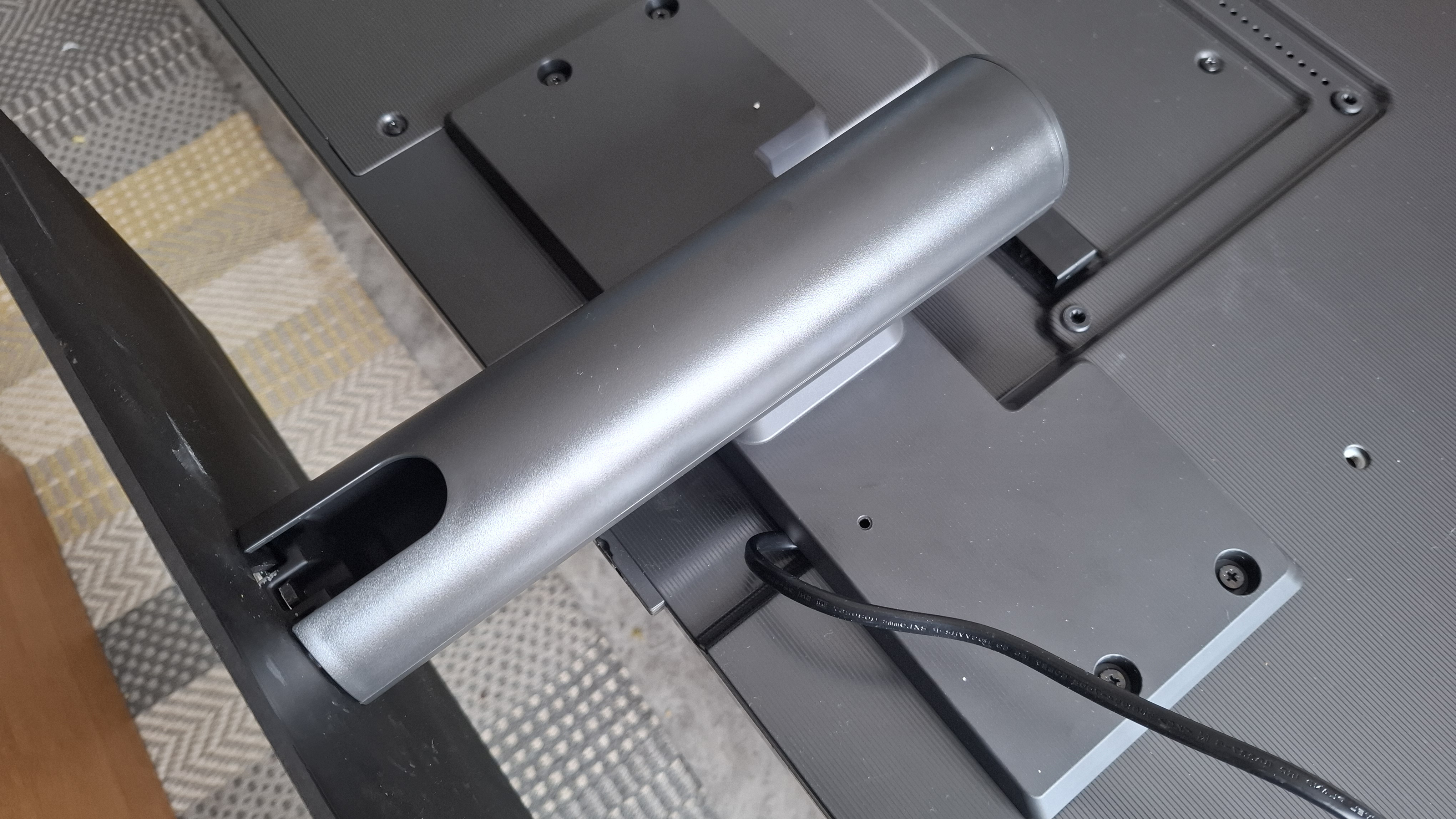
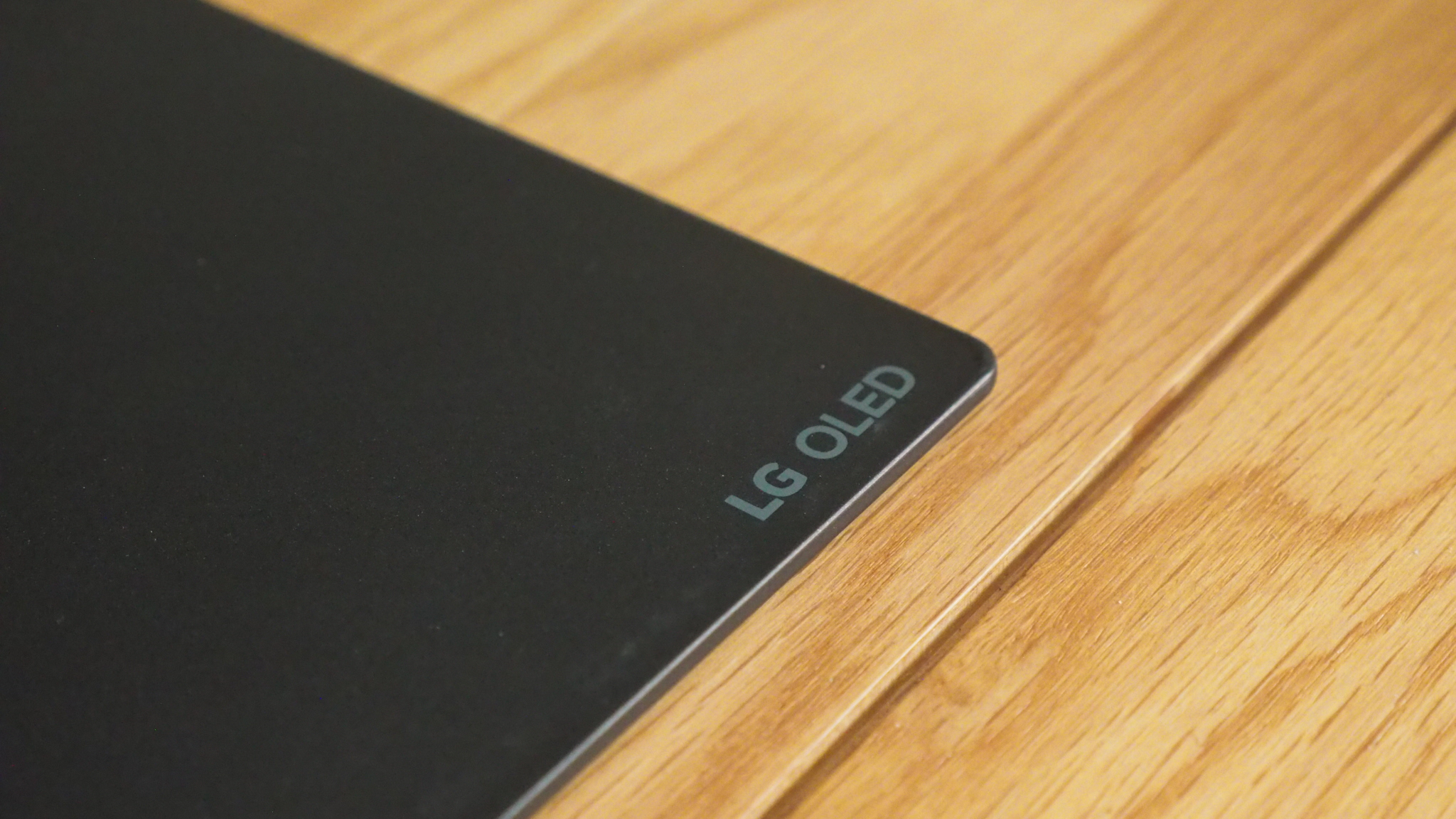

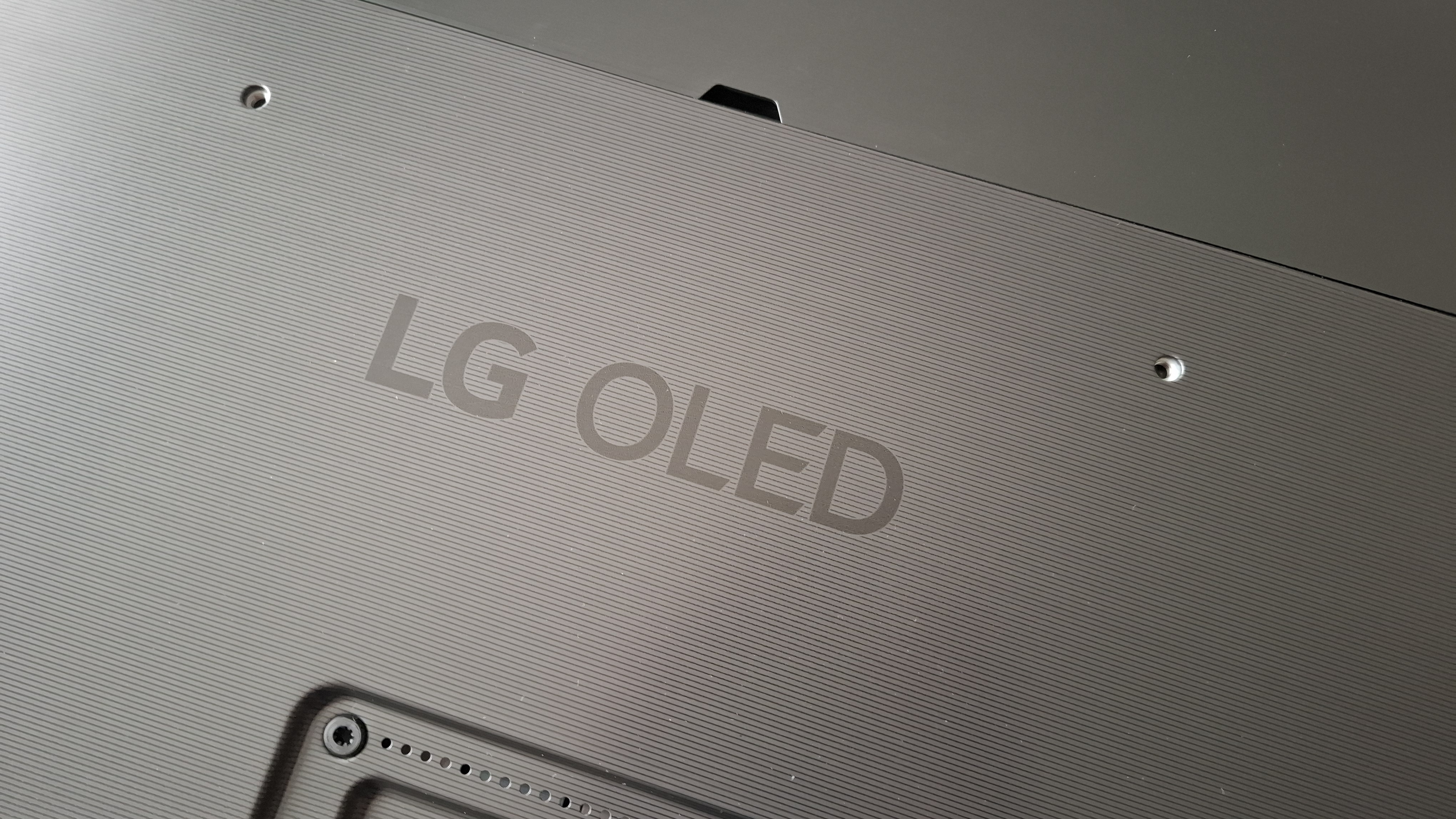
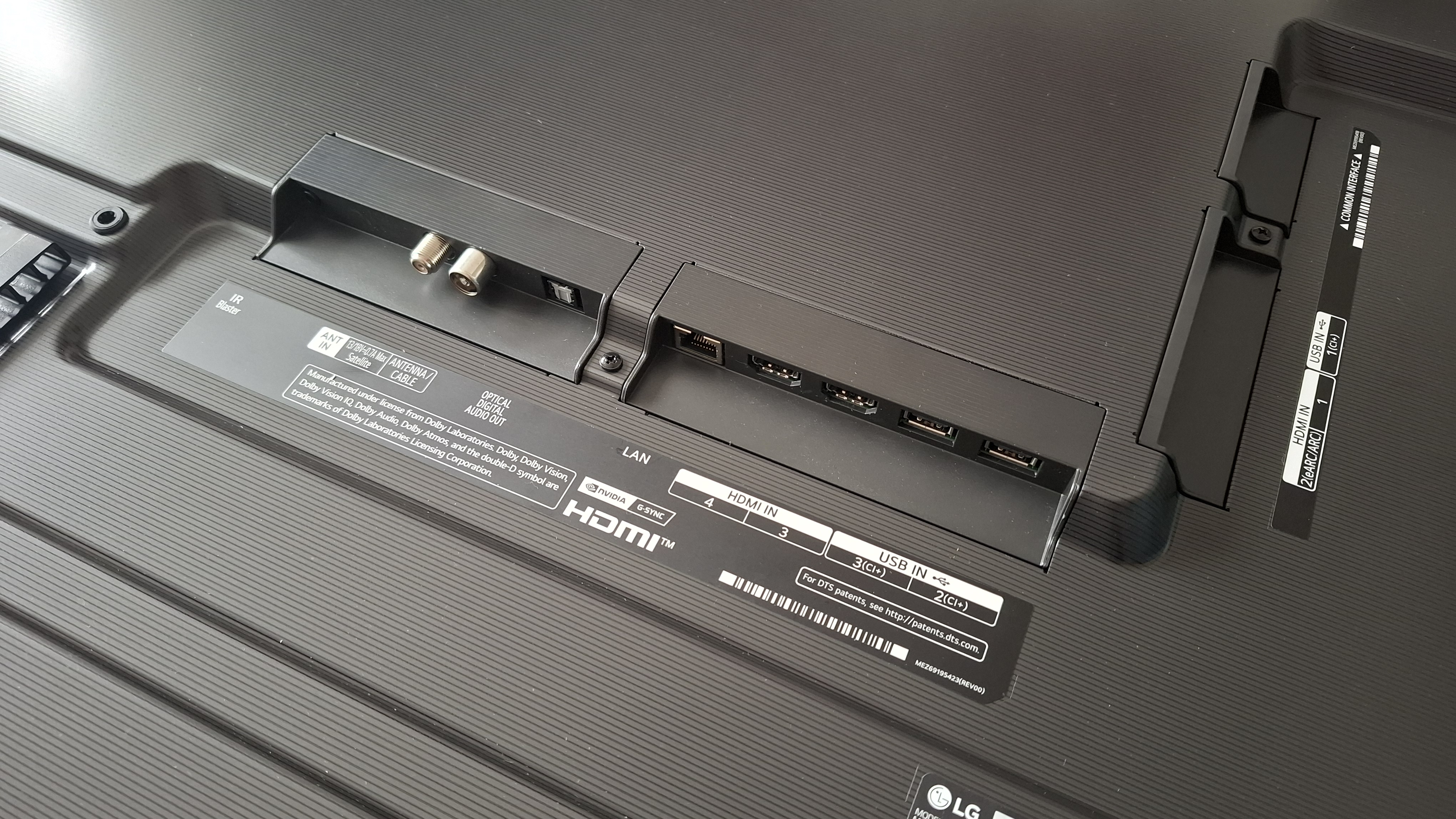
When I first pulled the 65-inch LG OLED G4 from its box, it was a great pleasure to find a buildable stand-mount included. You can see my gallery of snaps above showing this mount during assembly and once on tabletop. That's the first big change for the G4: no need to buy an extra one separately!
Otherwise, in terms of design, the LG OLED G4 looks a lot like its G3 predecessor. Which is no bad thing at all: minimal bezel to the panel's edges is held together with a metal frame that's of great quality.
There's the same four HDMI 2.1 sockets on the back as before, too, but this time there's PC gaming support up to 144Hz – which is a major future-proofing feature for gamers. That won't matter for console gamers yet, though, as the PlayStation 5, for example, can't support that high a refresh rate.
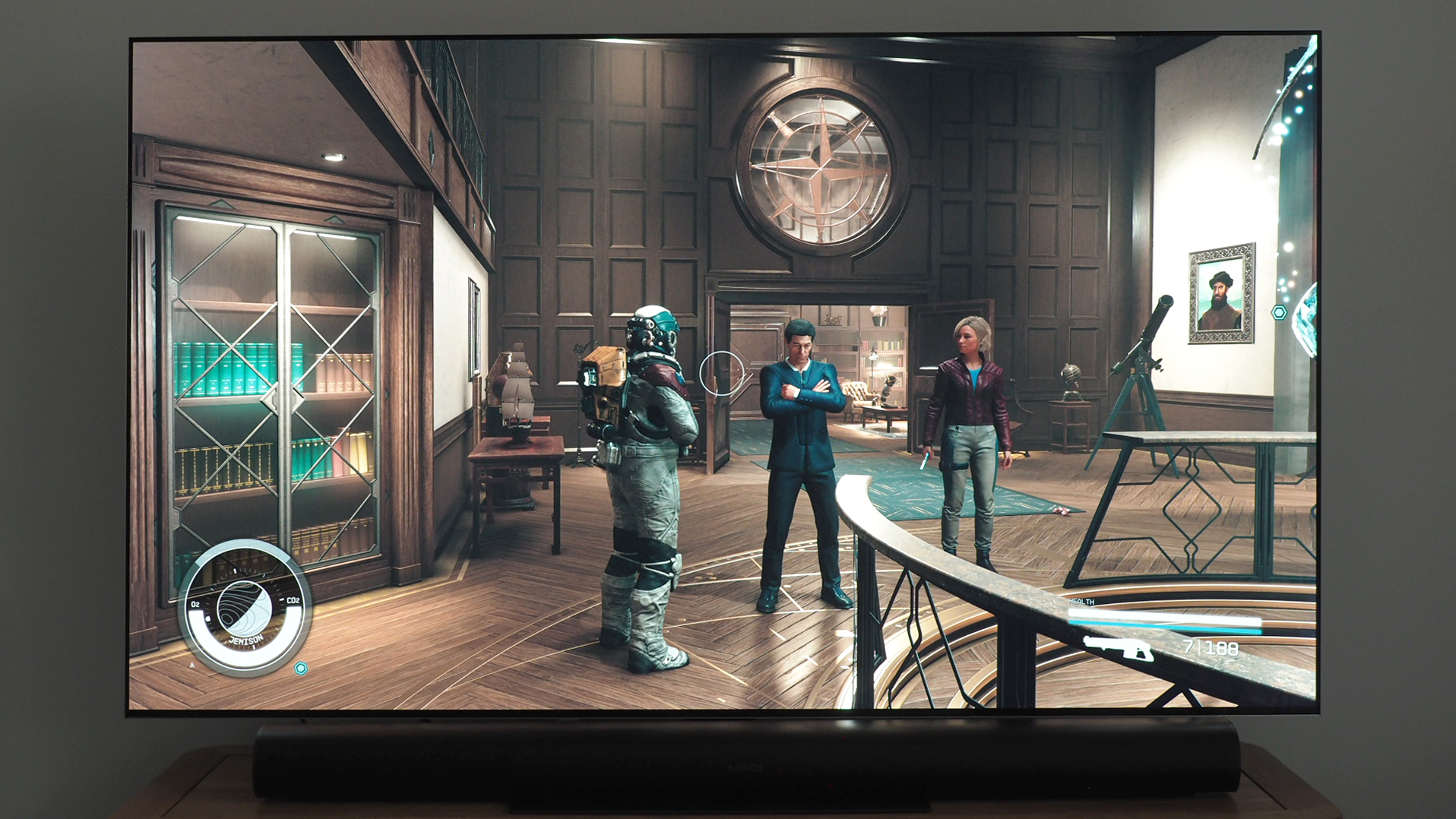
The biggest change ultimately comes from within: the all-new Alpha 11 AI processor is a step above its Alpha 9 Gen 6 predecessor, promising more power (with a 400% AI performance boost, 170% graphics performance improvement, and 130% general processing improvement, according to LG) to do more with images in real-time.
Sound has also seen tweaks, with the 60W speakers now offering an 11.1.2 Dolby Atmos-capable upmix courtesy of the new AI chipset. That's a step up from the 9.1.2 system of the G3.
The OLED G4 doesn't tout a massive peak brightness jump over its predecessor, but it's the brightest pure OLED panel you'll find on the market right now. Its new Peak Highlighter feature does mean a further boost in, you guessed it, peak highlights though. But it's really down to how the AI engine analyses pictures that allows it to target brightness – that's where additional improvements can be found.
LG G4 OLED review: Picture quality
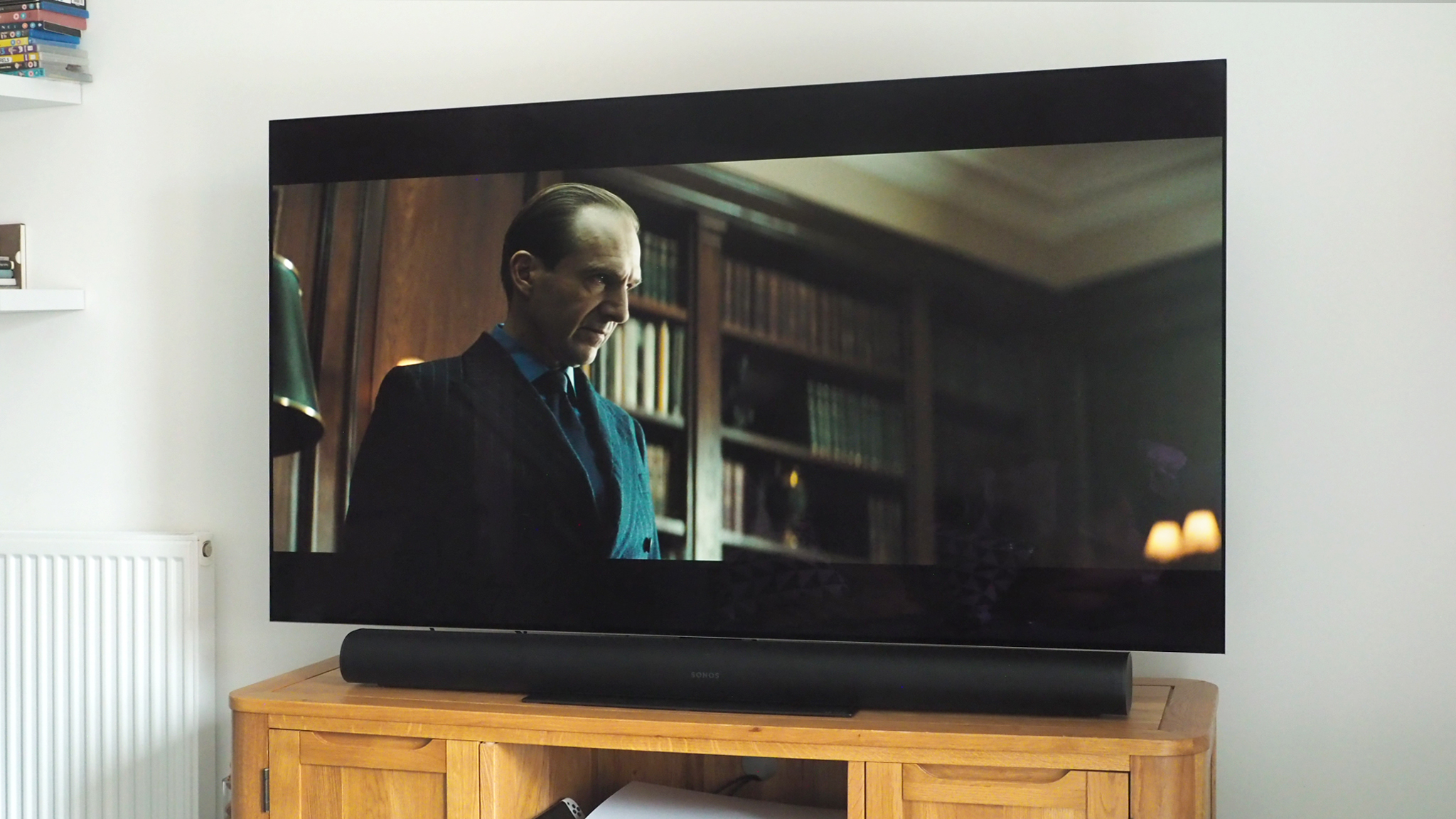
Where the OLED G4 really sings is with its picture quality – most of the time anyway, as there are caveats. When LG first demonstrated its full range of TVs to me at its UK headquarters, for example, I found that one of its AI features produced an overly pronounced depth of field that disrupted the picture quality.
However, in many circumstances it's this new artificial intelligence system that squeezes more out of the G4's images: because the engine can define what's on screen, it can illuminate subjects with absolute precision because it knows the context of the image. That means it's far more precise than a zoned backlight system, such as that of a Mini LED competitor.
Just as I found with the previous LG G3, too, the G4 will need a little tweaking to your preference to get the utmost out of it. But that's because it's so broad in its capability and can cover so many angles. Its Vivid mode, for example, is eye-wateringly bright and will bring cartoons to life with epic pop to colour. Its Gaming mode is super-low-latency and made my Starfield sessions look sublime in their smoothness.
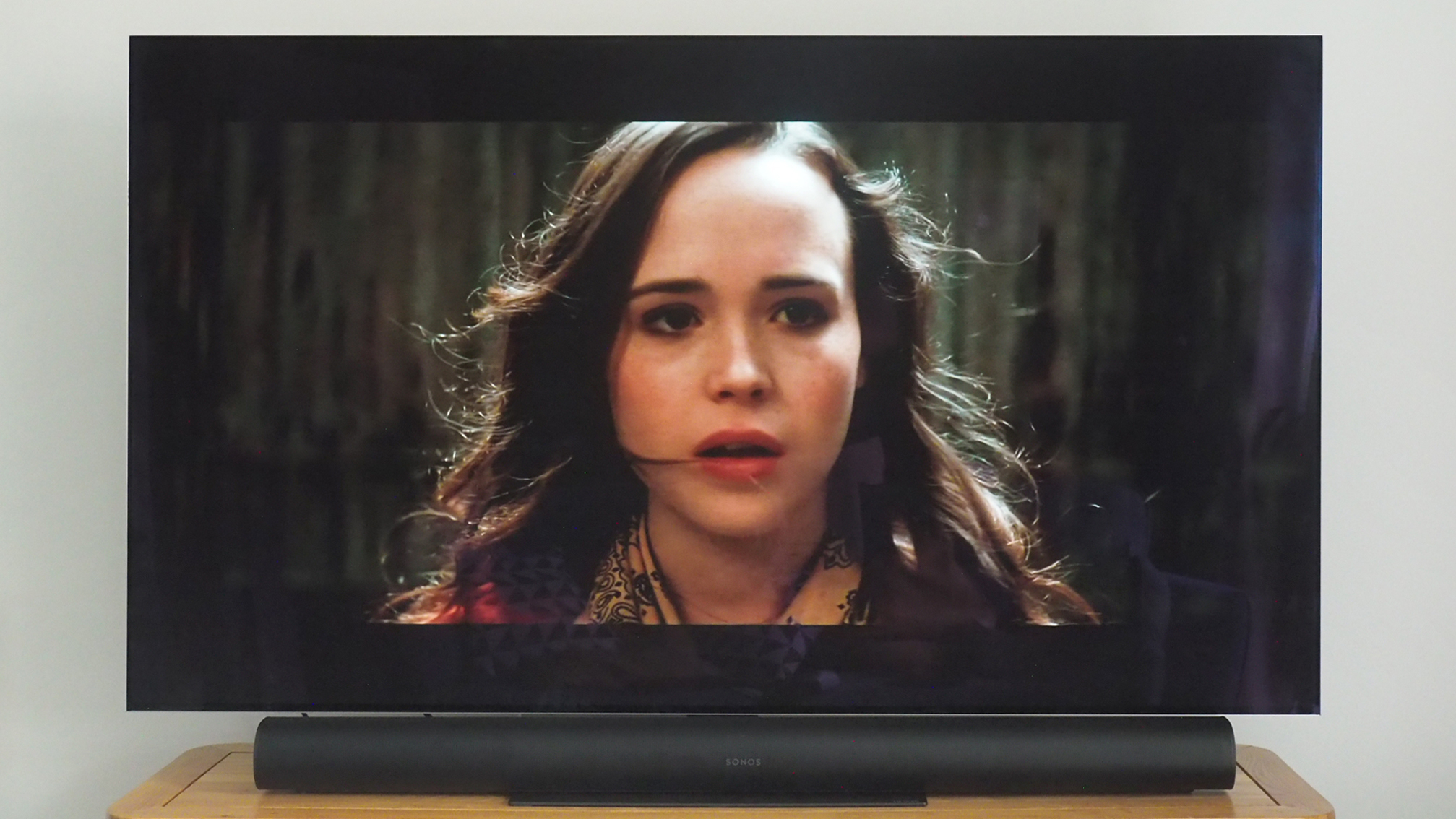
But it's not always in its brightest of moments when the G4 looks best – quite the opposite much of the time. With Filmmaker Mode now offering a Dolby Vision version, I've found watching late-night movies with super-dark scenes to have an almost endless depth to their visuals. There's a reassuring accuracy to the colour palette whatever the brightness – no runaway greens like you'll find in some competitors – and the set ensures it holds onto saturation even in nighttime scenes.
Like its predecessor, the G4 offers an AI Picture Wizard so you can pick from prompts – a bit like selecting the better/worse of two lenses during an eye test – and define a setup that's most preferable to you. Personally I found the result too garish for really using, but some may find it helpful.
And not to lean into repetition too much, but the OLED G4 also echoes its predecessor in really making the most from the very best of sources. Sure, a quick watch of Somewhere Between The Pines on BBC iPlayer looked grand – it's a gritty movie anyway, so not the best ever example – but did highlight a whole lot of texture. That's just this telly showing how much it'll enable you to see, though, as pop in a 4K Blu-ray to an attached player and, wow, the visuals step up a notch further.
Lately I've been defaulting to Dune for its dark scenes, sometimes offset with brightness peaks, but this time around I revisited Spectre for a bit of great Bond action, and Asteroid City for some candyfloss-like colour. In each case, the clarity, the brightness, the natural handling of what's on display is just top-tier. Watch in a darkened room and it feels to me like being in an ideal private cinema.
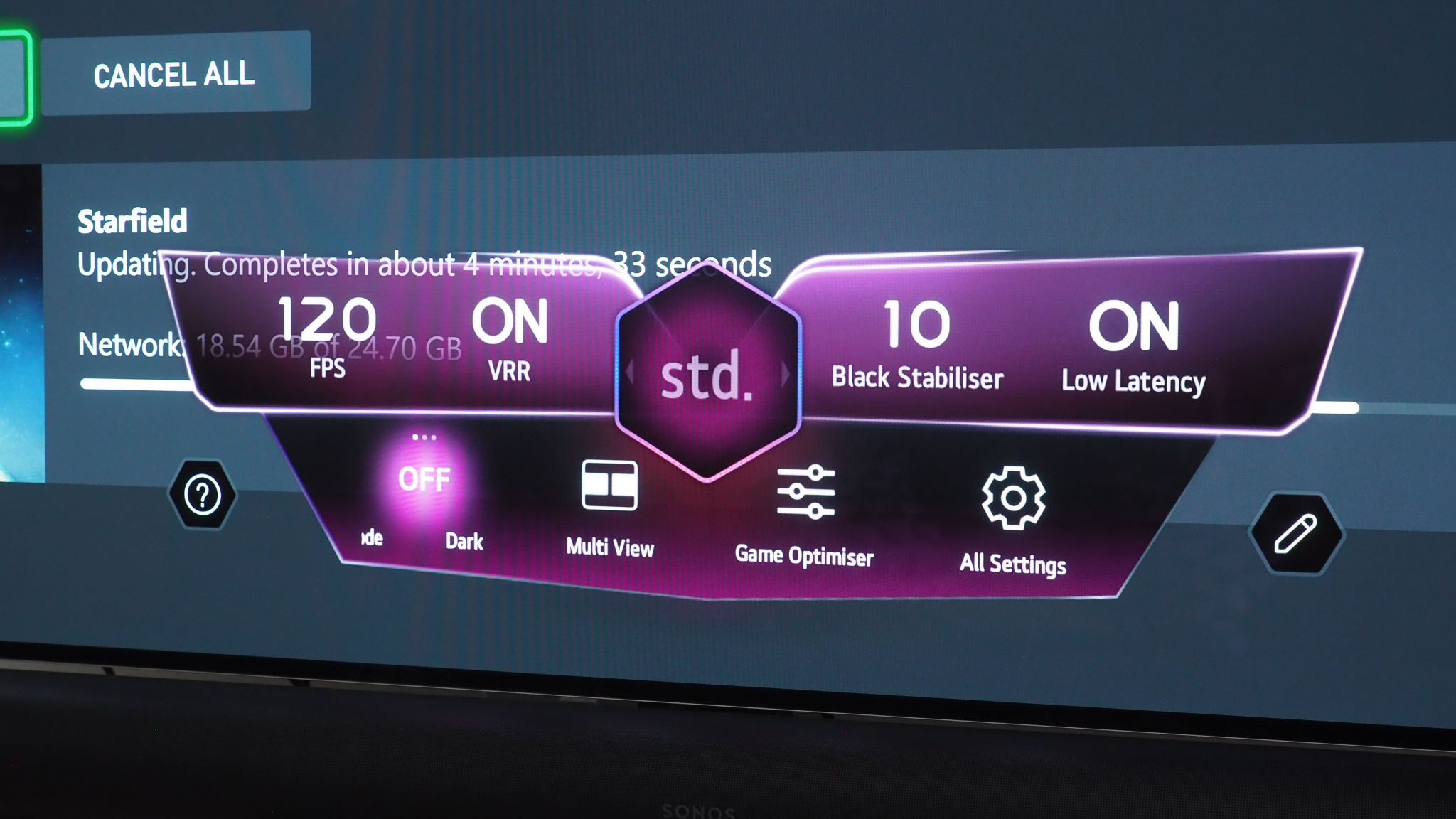
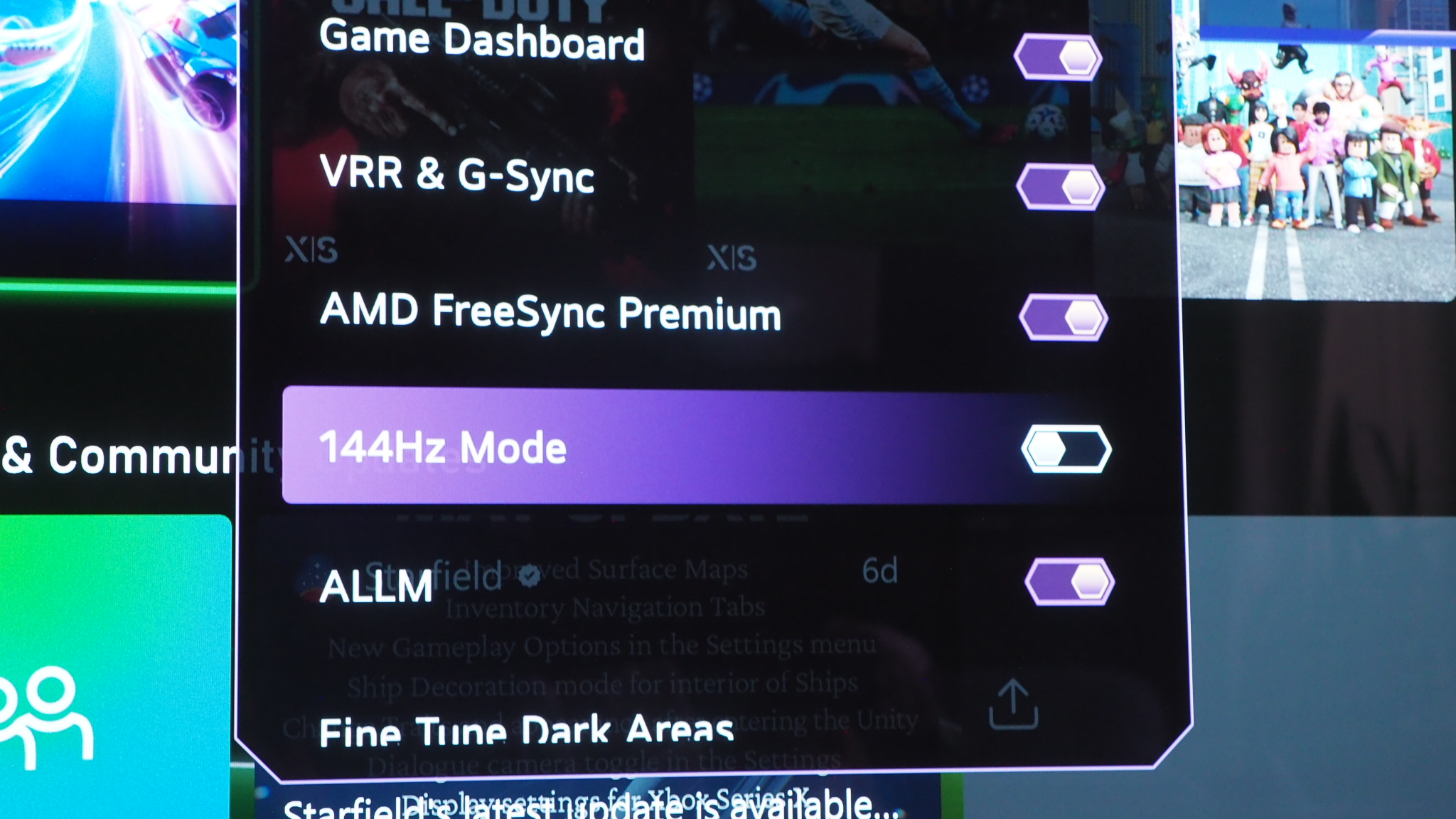
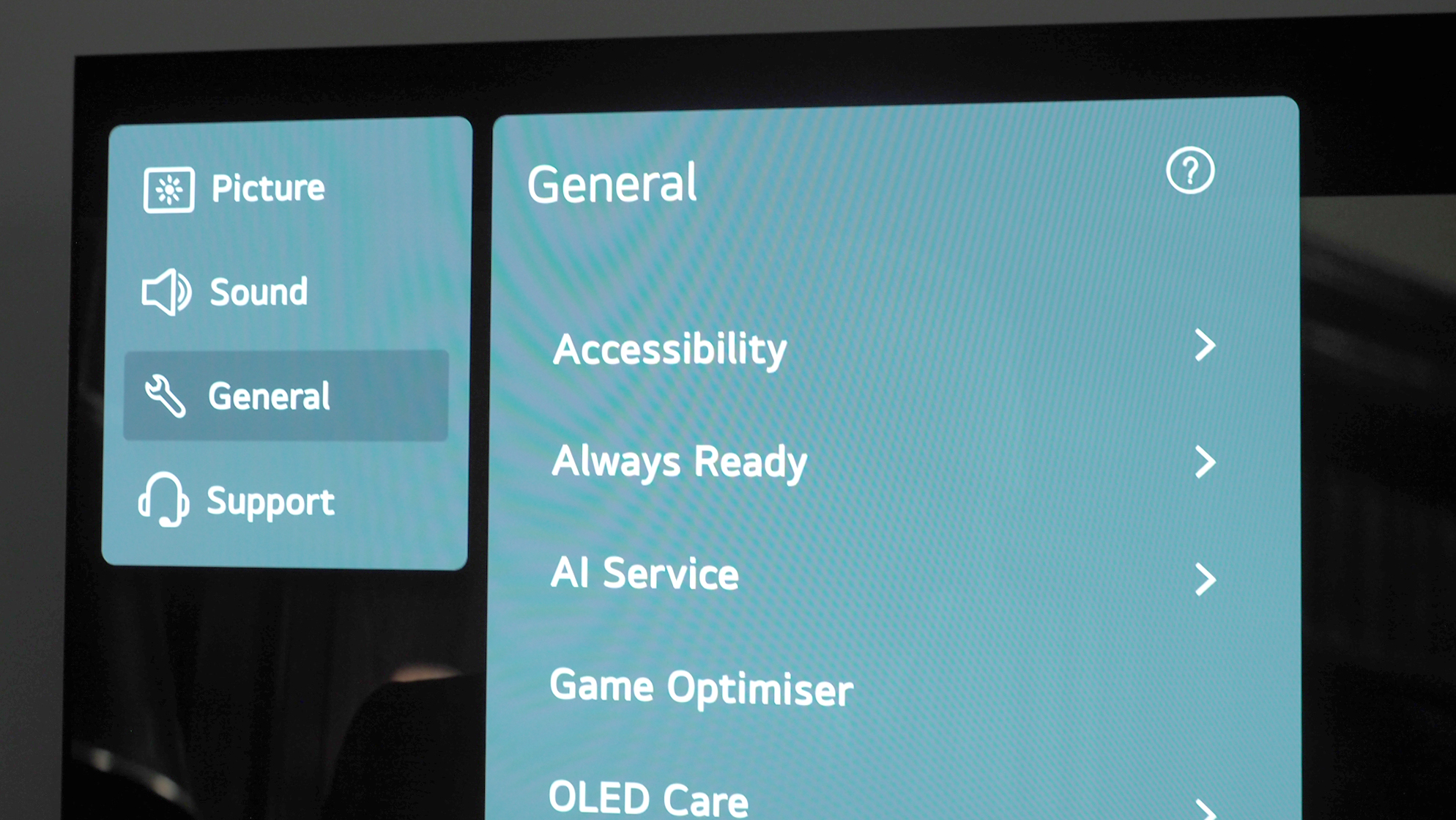
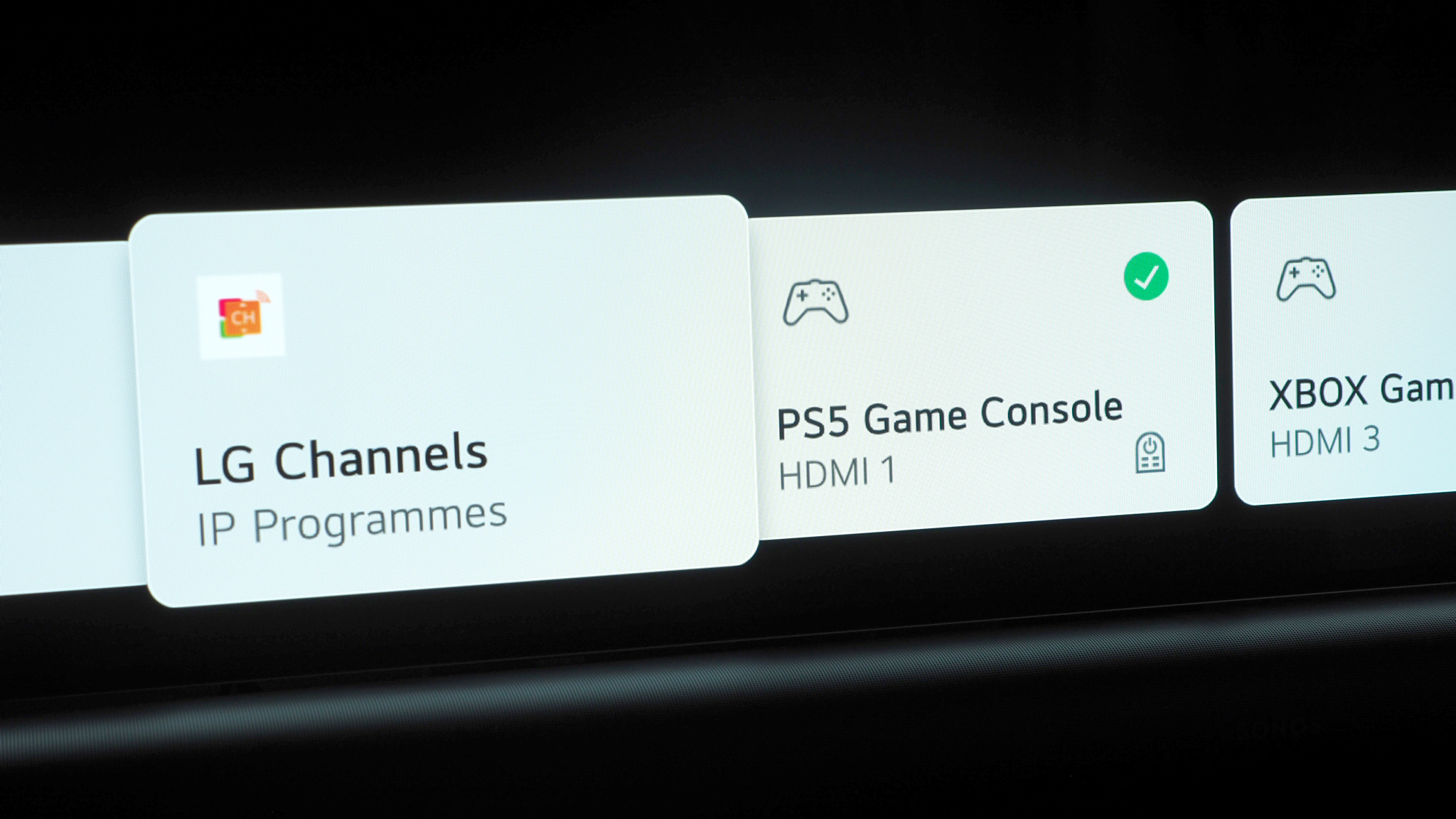
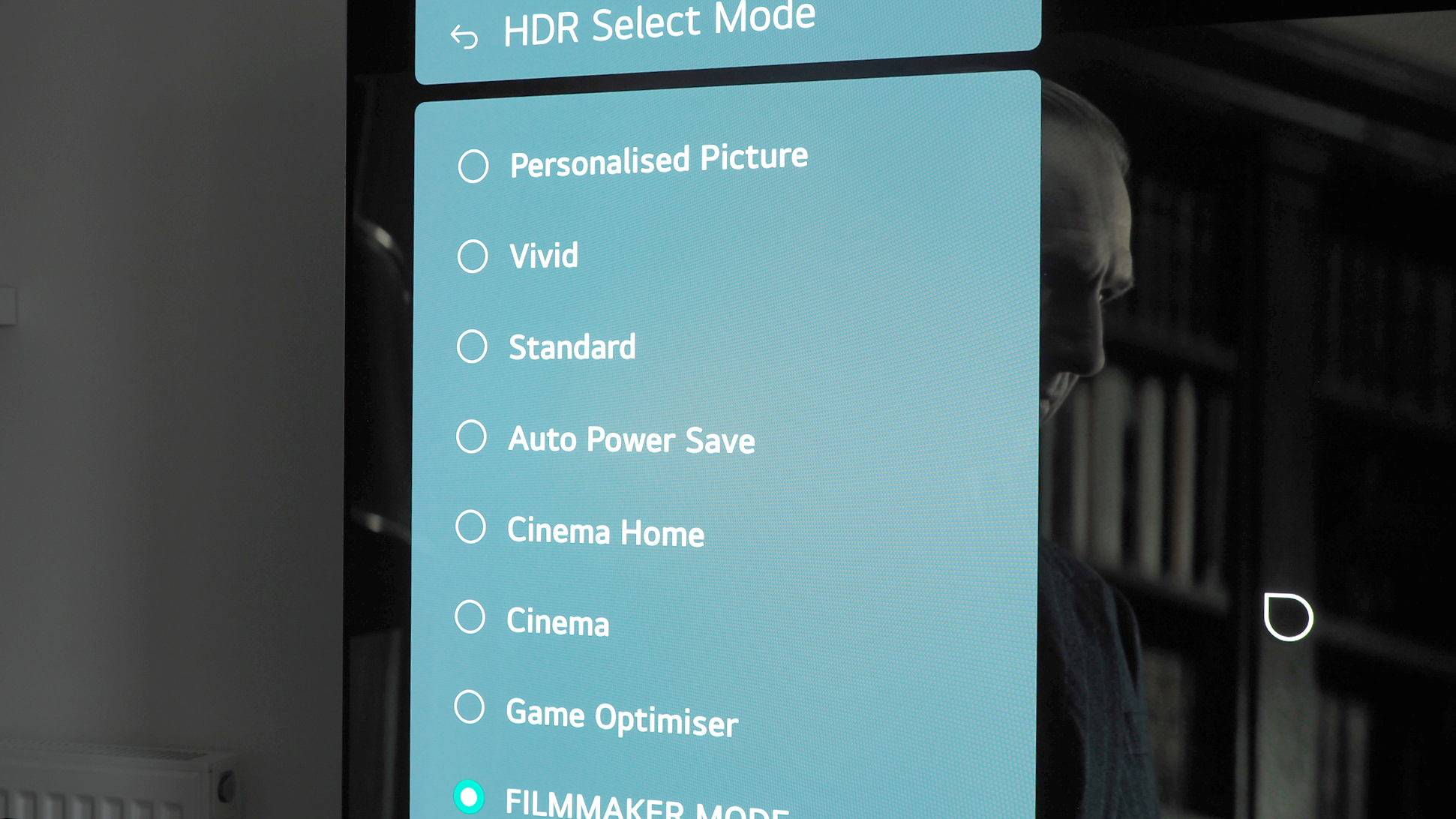
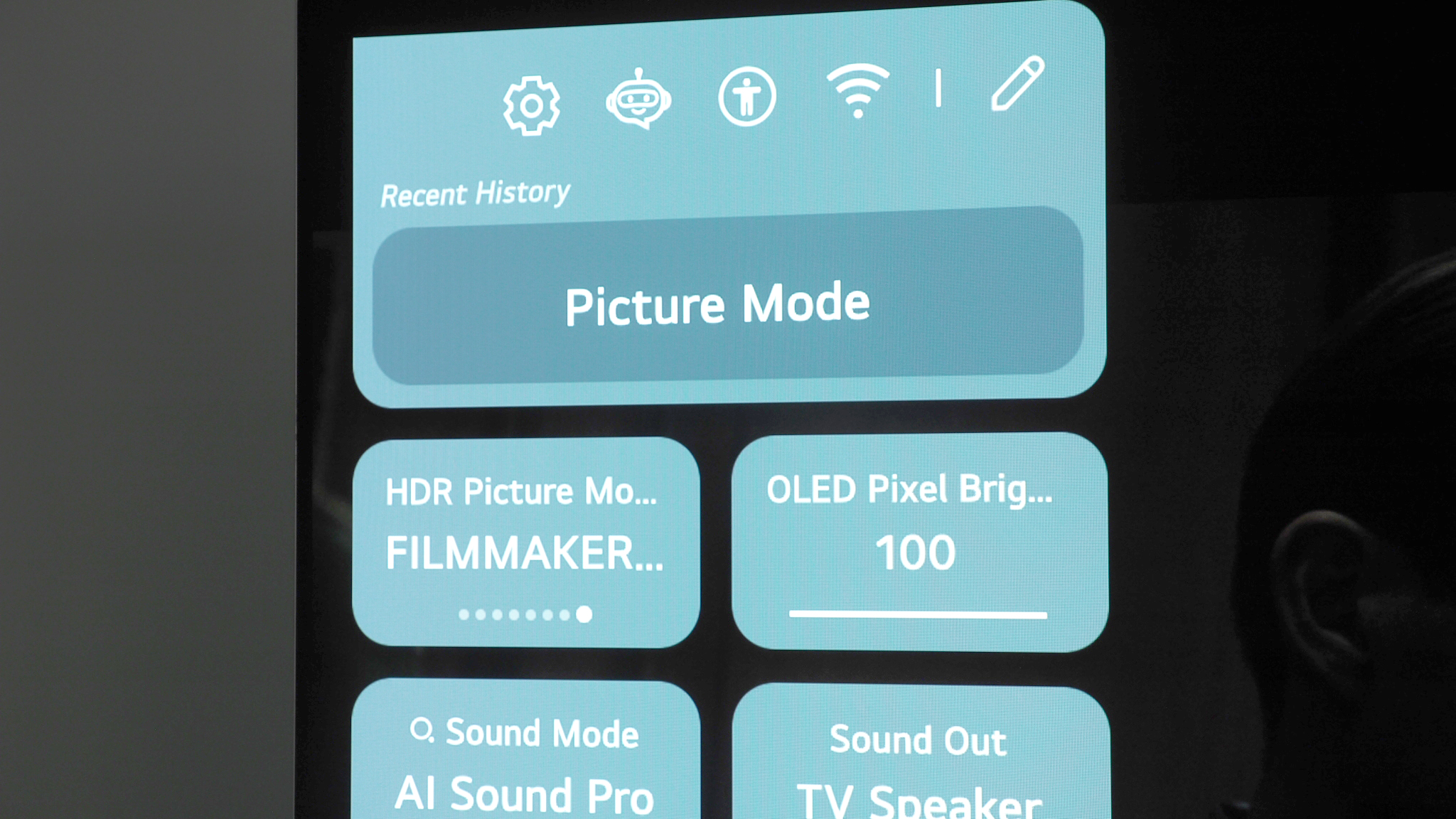
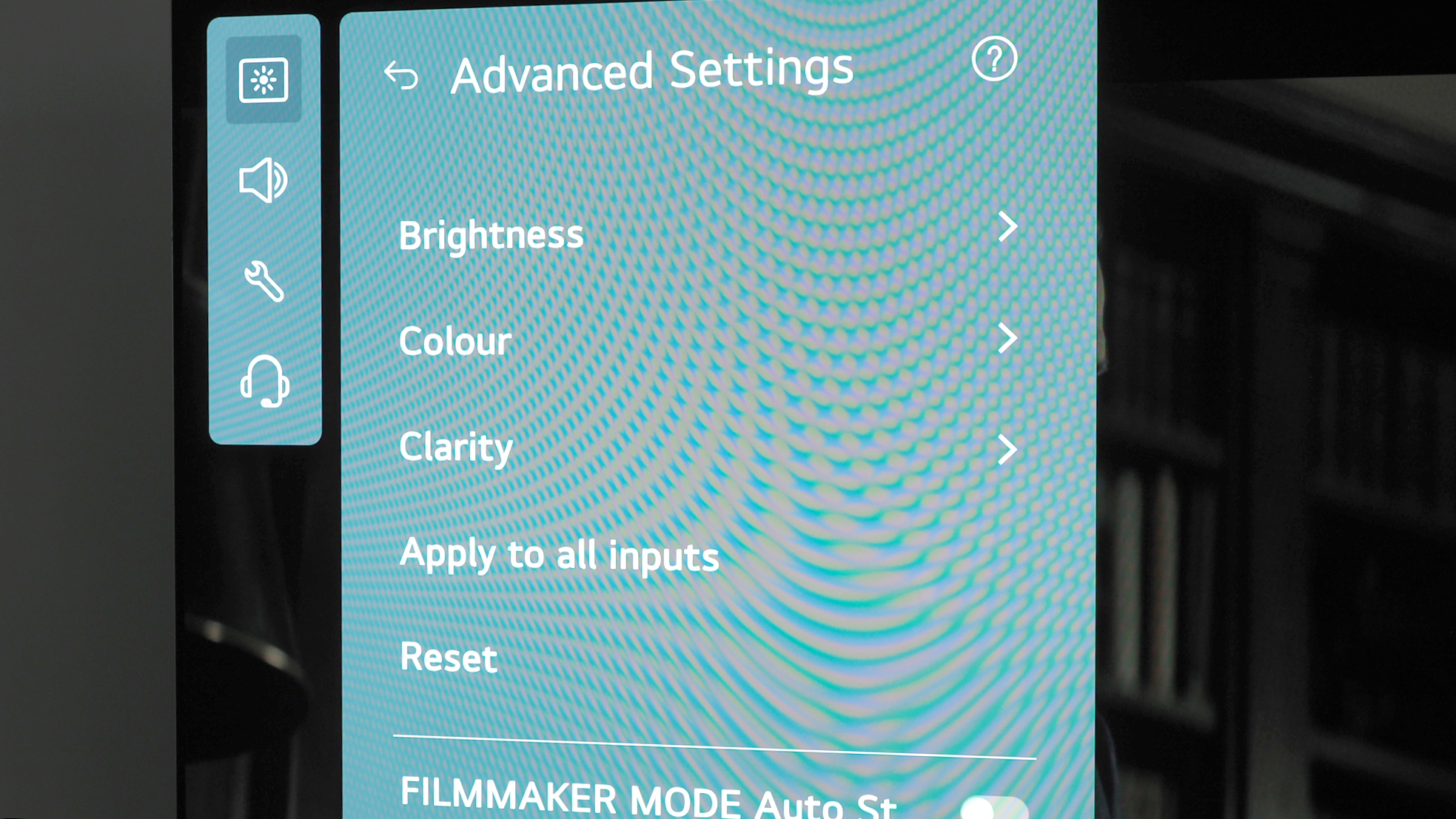
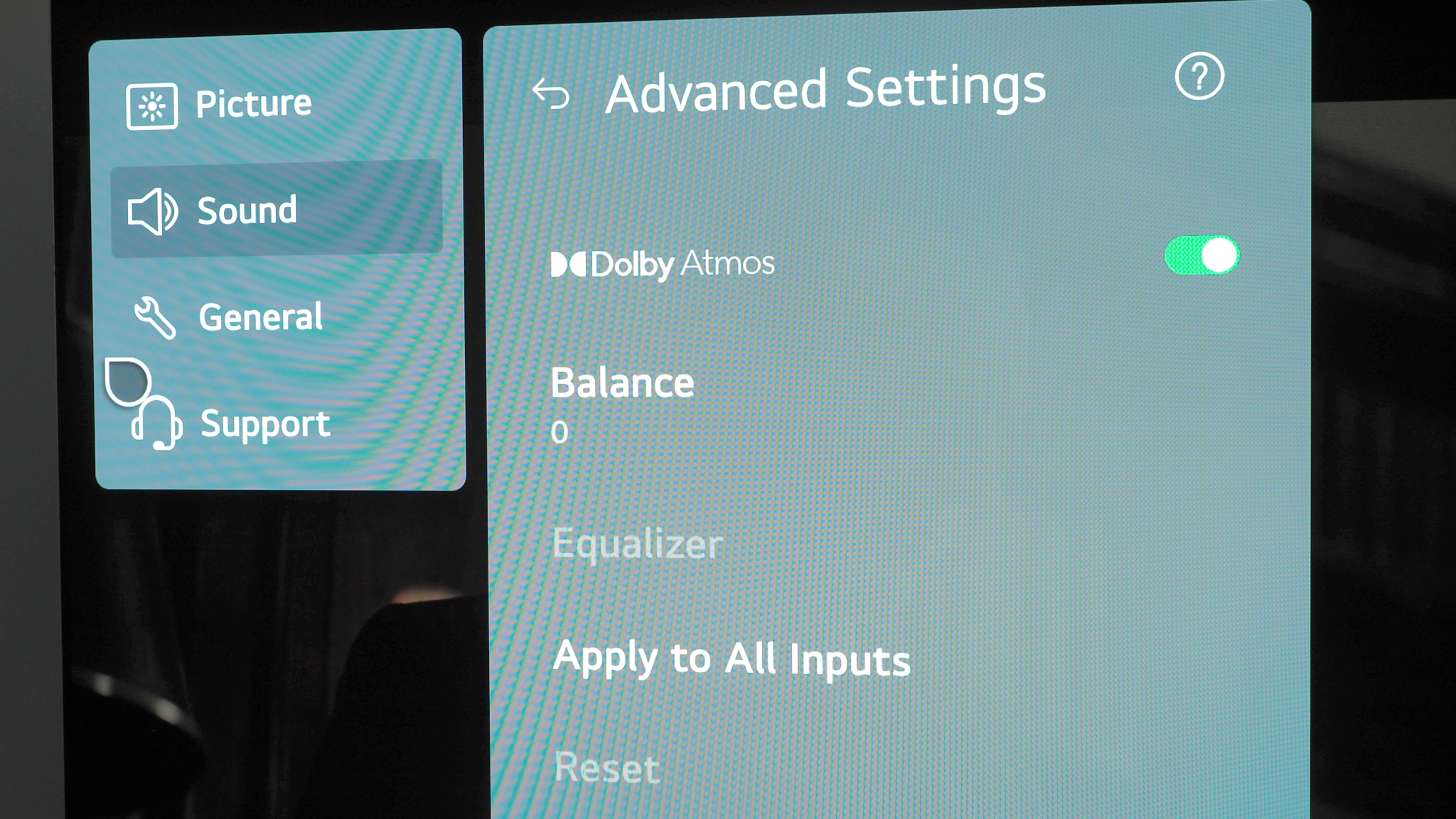
With gaming is one area where the OLED G4 may be unrivalled. I know, not everyone is going to buy a telly for gaming, but a number of the beneficial features could still bring uses to other viewing situations. First up, it's the four HDMI 2.1 ports that mean you can get 4K resolution at 120Hz, with VRR and ALLM in full support – many competitors only offer two ports out of four at this standard. The addition of 144Hz isn't something I could test, with a lack of a high-end PC rig, but that it's available puts the LG a step above much of the competition.
All in all, then, the LG OLED G4's picture quality makes it an accomplished all-rounder that's a master of all. Whether watching sports, playing games, or digging into the best cinematic visuals, this high-end set delivers high-end quality through and through.
LG G4 OLED review: Sound quality
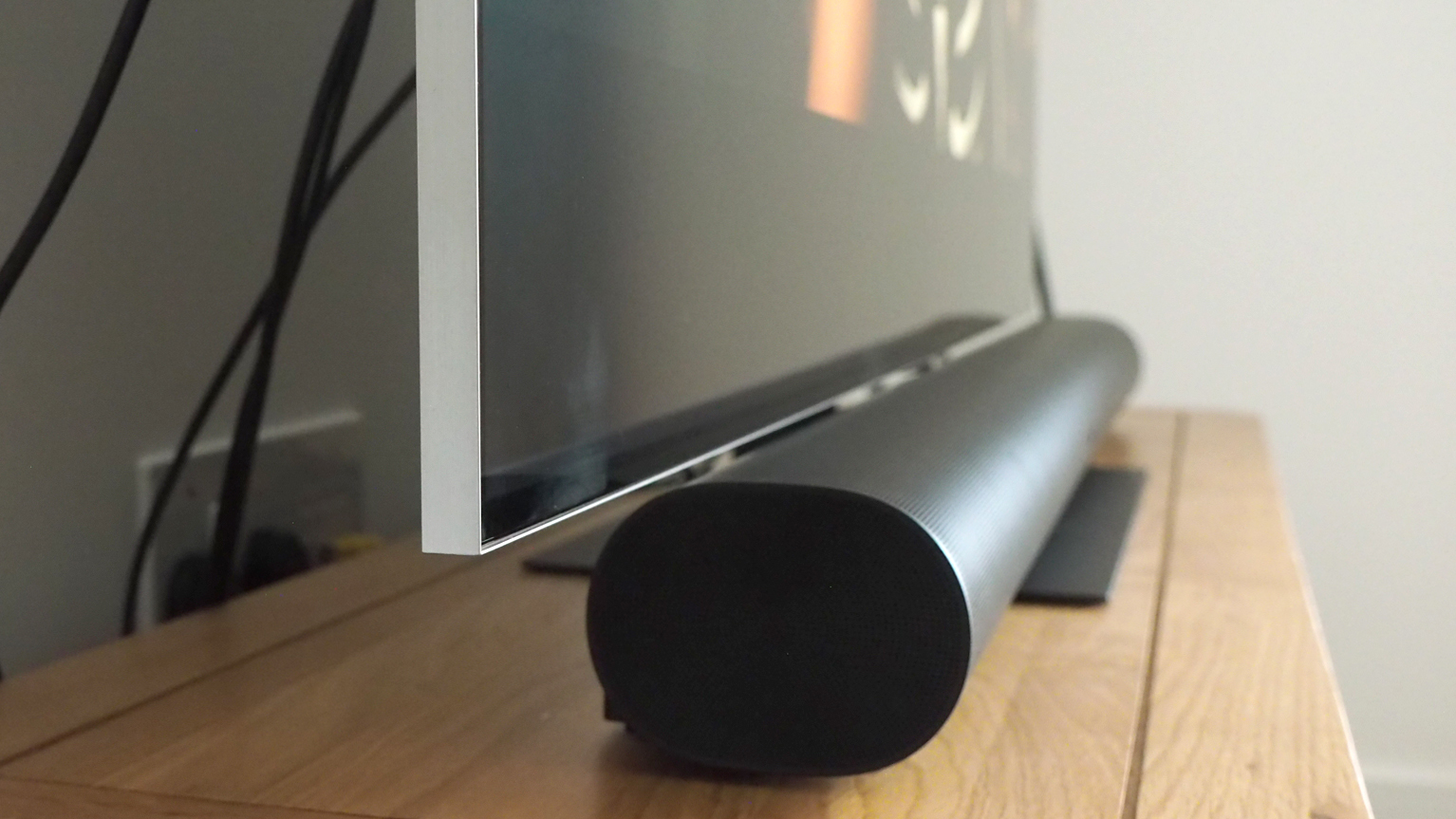
It's not a gigantic surprise that a slender TV doesn't contain the biggest of speaker drivers. As a result the LG OLED G4 isn't the very best sounding of TVs straight out of the box – although it's very capable of delivering convincing height, just without as much oomph as you might want.
Fortunately, as I've experienced, add one of the best soundbars for LG TVs and you'll be onto a winner. I tried the set mated with the top-end S95TR soundbar using the company's Wow Orchestra feature (which also syncs with the TV's speakers) and was blown away – a great thing, as previous iterations of this system haven't always been fully successful in my opinion.
While I've not had that soundbar at home to test just yet – it's forthcoming though – I did setup a Sonos Arc with Sonos Sub to get a massive sound boost. I'd strongly suggest buying into one of the best soundbars such as this, as the added three-dimensional sound effect thanks to Dolby Atmos is a big benefit.
Some competitors do have better sound straight out of the box, it must be said. You only need to look at Sony's A95L and its ingenious soundsystem – which vibrates the screen itself to act as a speaker – to hear just what's possible without adding extra boxes or expense. So LG does still have plenty of room for improvement here – and I still find its AI Sound Pro, despite improvements, to overdo its assessment – but as I say, it's likely most cinema fans will plump for a soundbar anyway.
LG G3 OLED review: Design & Usability
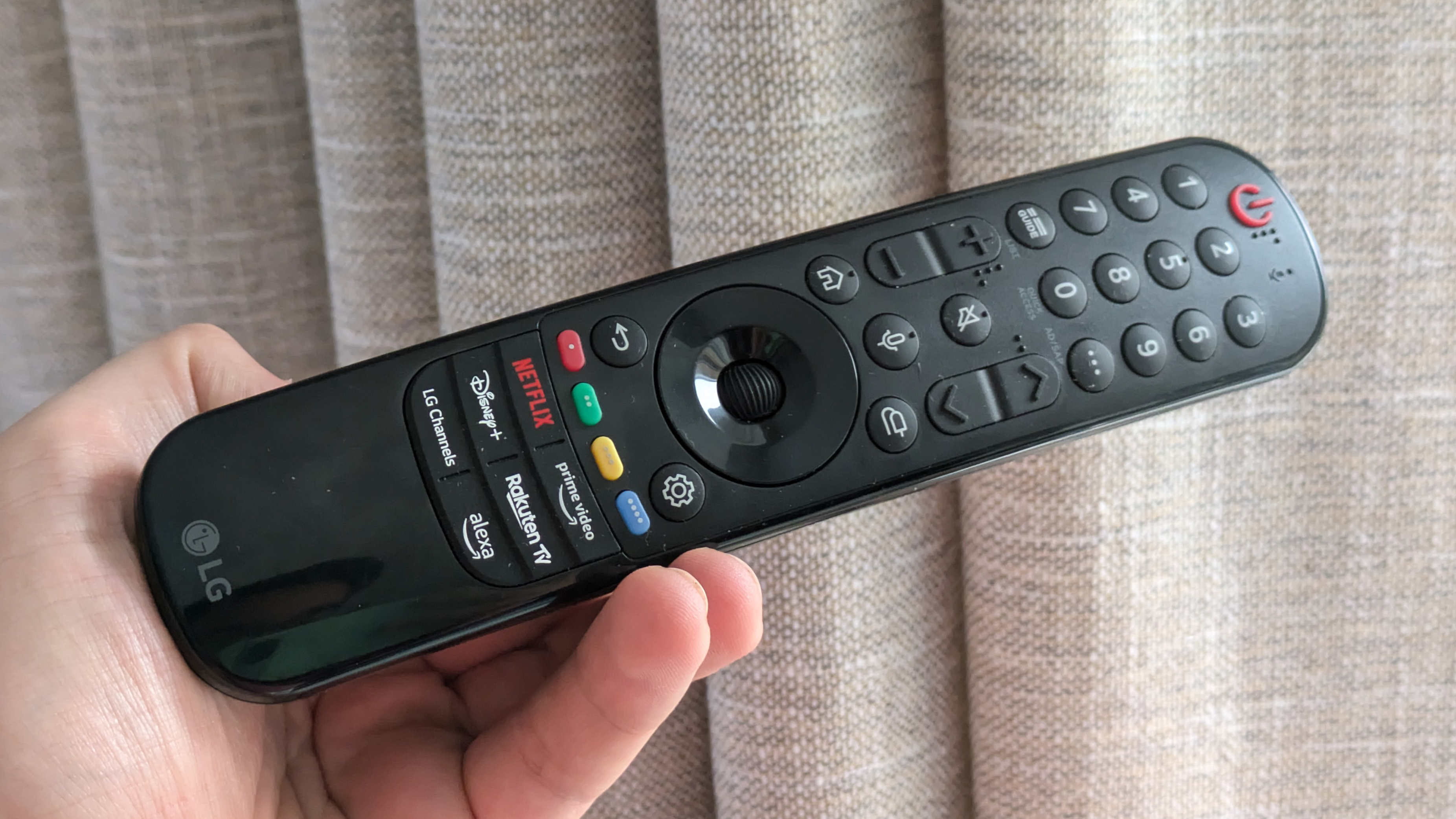
While I do love that the G4 now comes with a stand-mount option, I did find it rather 'wibbly'. I daren't touch the set if avoidable, given how much it wobbles about. There again, I am consistently amazed how these massive monoliths are able to stay upright on stands which tend to only use a smattering of screws and sit on a small footing.
When it comes to controls, LG's distinctive Magic Remote acts like a wand and, from what I hear, this causes a bit of a love-hate divide for some users. I'm quite happy pointing and clicking using it, but it's just as easy to use directional buttons or another remote control that'll easily be picked up by the set too – such as my EE set-top box's remote.
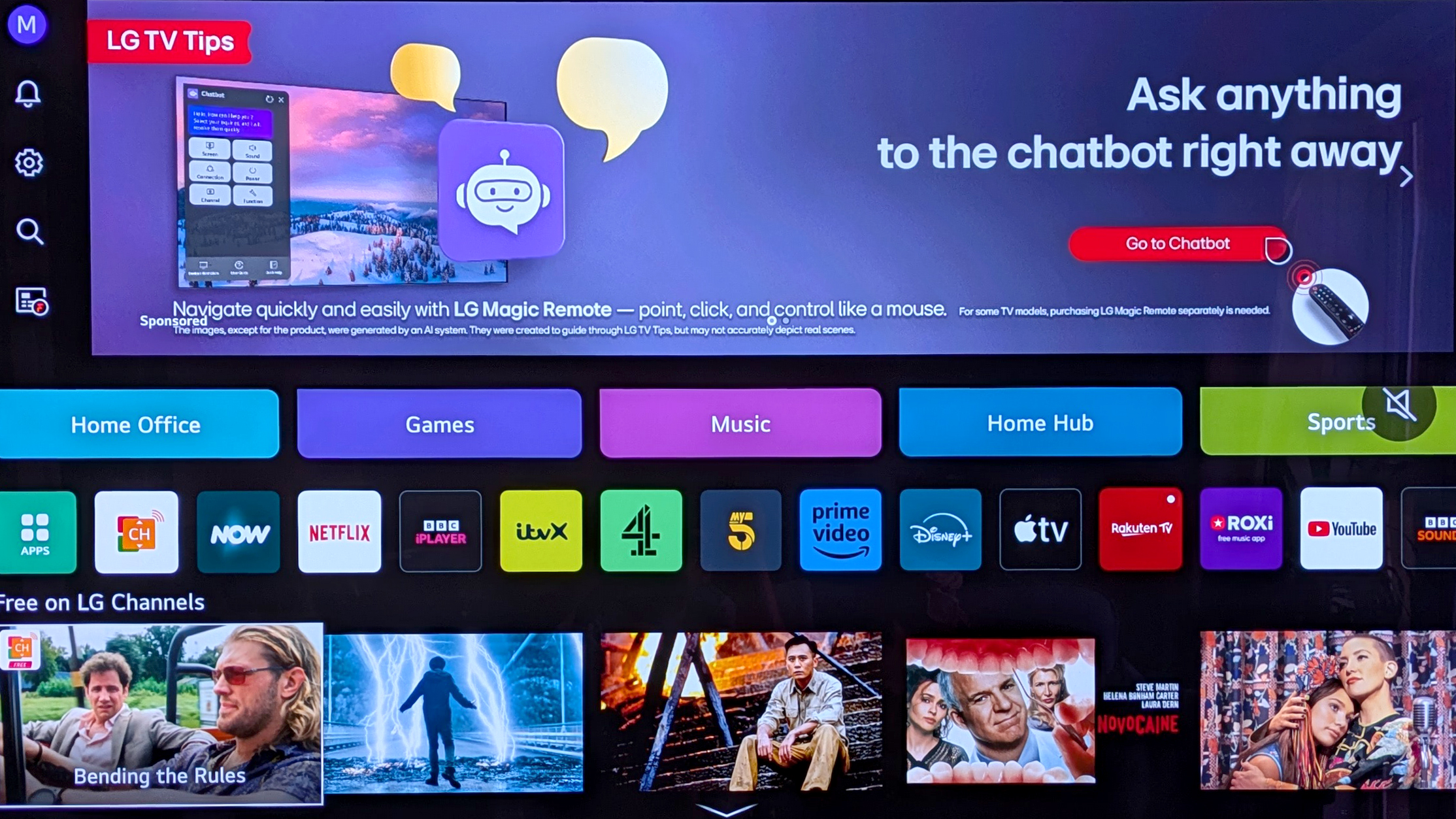
In terms of software, LG's webOS is a longstanding and successful operating system. It's continued to strip back its visuals, with more showing on screen and fewer unused spaces than in earlier versions (although, annoyingly, the top third is still a massive ad space – during my review time it was only showing prompts for better experiences, though).
WebOS is a great hub to access your sources, your content, and even some baked-in streaming channels – which I wrote about in LG's free streaming upgrade mini-feature. WebOS will also upgrade for years to come, so it's future-proofed in that regard – as it'll include new features too.
Furthermore there are new accessibility and voice controls, so if you've got a query about how to change something then you can literally ask the TV and it should present you with an actionable response. And given the number of settings and options on offer here, some users may well find that particularly useful.
LG G4 OLED review: Verdict
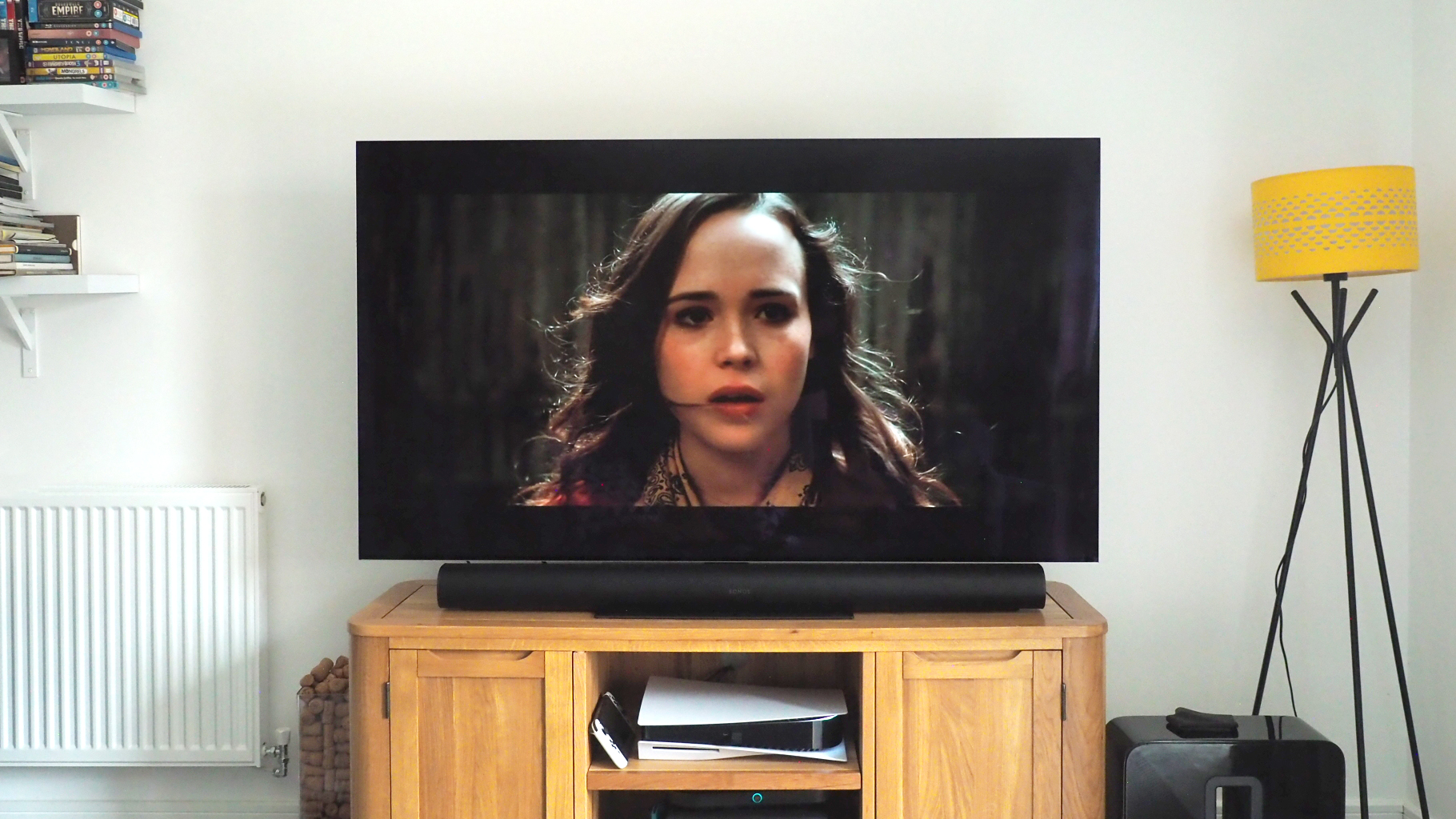
While it wasn't long ago that I quipped "TV doesn't get any better than this", the LG G4 goes to show just how things can advance. Because this is the new standard for traditional OLED.
If you're a big fan of cinema or gaming (or, indeed, both!), then LG's top-tier telly is incredibly well-equipped to handle both – and with such aplomb that your retinas will be giddy from this degree of picture quality.
The addition of a stand-mount option in the box for the most popular 55- and 65-inch models will only make the G series an even more obvious pick for this generation – but you can still wall-mount if you prefer.
While out-the-box sound isn't the very best going, add a decent soundbar and you'll get to experience one of the best TVs money can buy. If you're a gamer there's nothing better on the market. LG is onto a serious winner in the G4.
Also consider
If you're not interested in buying a separate soundbar and you've got the physical space for it – its feet are positioned to the panel's edge, so are very wide apart – then the Sony A95L could be the best TV we've ever seen.
Aside from that, if you're willing to forego traditional OLED for the typically punchier colours of QD-OLED, then Samsung's super-antireflective S95D is a great all-rounder.
Fixated on having a traditional OLED TV but don't have a big enough budget for the G4? The older LG OLED G3 is a very similar set overall and pound for pound makes more sense to snap up in a sale.







